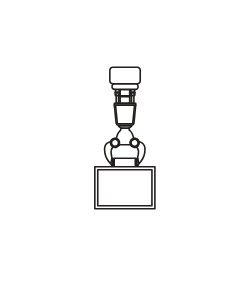The Properties And Functions Of Low-Density Polyethylene (LDPE) Sheets
LDPE sheets are the most prevalent variation of plastic filming. It is a flexible material, possessing a thickness varying from 0.5 to 40 millimeters. These sheets are extremely sturdy, even at low temperatures, and have melting points ranging from 105 to 115 ℃. They also have a guaranteed chemical resistance, therefore, offering a protective film for your goods. This feature highlights why it is the go-to sheet to use when covering your computer parts, laboratory appliances, or tubing, among others. Read on to unearth more detailed facts about LDPE.
Applications of LDPE Coverings
Packaging and unpackaging operations vastly involves the use of LDPE films. Their properties make their application valid and are a necessary asset when maintaining the condition of wrapped goods. Some of these applications entail:
1. Wrapping Hot Foods
Low-density polyethylene films resist heat depending on their thickness and do not sustain any damage from the food's temperature. This helps the food retain its temperature; for hot foods, it prevents condensation as the food cools, hence making the food soggy. You can wrap your food using LDPE sheets for refrigeration due to its high impact sturdiness at cool temperatures. To-go restaurant owners can also harness this application of LDPE.
2. Manufacturing Various Packaging Vessels
This application ranges from squeezable containers to plastic bags. The chemical resistance of this film makes it possible to package chemicals in vessels made from low-density polyethylene, including insecticides. Its inertness ensures it does not react with the contents of the container.
Why Use LDPE Sheets?
In a world where individuals vastly depend on plastics, it is crucial to know the merits of the prime sheets in the market to get the best quality. Below are the merits of incorporating LDPE films into your utilization.
1. Moisture Resistance
This attribute makes low-density polyethylene films suitable for the production of vessels in all variations. They prevent leaks, making them useful for storage containers. In this aspect, LDPE sheets are handy in making water pipe linings to make them waterproof.
2. Cost-friendly and Recyclable
These combined qualities make low-density polyethylene films excellent manufacturing materials for clients across various sectors like the food or retail industry for food packaging or making shopping bags. Additionally, they can avert environmental concerns because of their recyclable nature. They can be recycled into different products, reducing their environmental impact.
3. Impact Strength
The impact resistance that LDPE films pack makes them suitably durable. For this reason, drinking bottles and water pipes are made from or lined with a low-density polyethylene sheet. Notably, drinking bottles for children use this material; hence, their durability is maintained whenever they play with or throw around their bottles due to the material's impact robustness.
Keep these tips in mind as you look for LDPE sheet providers, such as Seiler Plastics.
 If you contribute to the industrial and manufacturing industry you may have considered implementing digital technology into your business. There's always a fear of the unknown and it's quite common to feel hesitant about trying something new. We created this site to help you decide if a changeover to digital technology is right for your business model.
We've researched the advantages and disadvantages of digital transformation by examining data, case studies, and speaking with manufacturing heads who have already embraced the transition. As you read the articles in this blog, you'll gain valuable insight into cost performance, productivity rates and quality enhancements of digital technology. We hope that by providing this information it will help you decide if a digital transformation is in your near future.
If you contribute to the industrial and manufacturing industry you may have considered implementing digital technology into your business. There's always a fear of the unknown and it's quite common to feel hesitant about trying something new. We created this site to help you decide if a changeover to digital technology is right for your business model.
We've researched the advantages and disadvantages of digital transformation by examining data, case studies, and speaking with manufacturing heads who have already embraced the transition. As you read the articles in this blog, you'll gain valuable insight into cost performance, productivity rates and quality enhancements of digital technology. We hope that by providing this information it will help you decide if a digital transformation is in your near future.